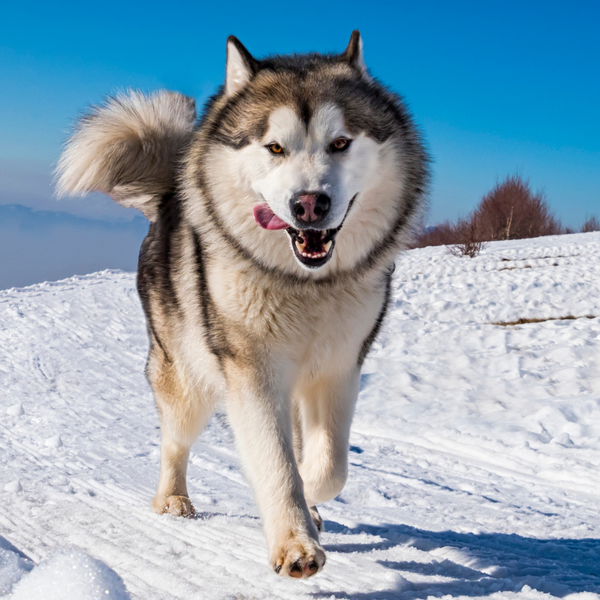The Alaskan Malamute, a breed renowned for its strength and endurance, captivates dog enthusiasts with its majestic appearance and playful demeanor. Commonly associated with cold climates, these dogs possess a thick double coat that enables them to thrive in frigid temperatures. However, this characteristic has prompted an important question: Is keeping a Malamute outside an instance of animal cruelty? To address this, we must delve into the complexities of canine welfare, the breed’s inherent needs, and the expectations placed upon them by their human guardians.
At first glance, the idea of allowing a Malamute to reside outdoors may seem innocuous, even beneficial. After all, these dogs were bred for pulling sleds and herding, showcasing a natural affinity for cold-weather living. Yet, while their physical attributes might suggest a predisposition for outdoor habitation, the emotional and psychological needs of these animals often paint a different picture. A comprehensive understanding of the Malamute’s nature reveals that their well-being is fundamentally intertwined with social interaction, mental stimulation, and environmental enrichment.
Malamutes are inherently social creatures, developed from ancestral lines that worked collaboratively in packs. In such settings, they thrived on bonding, engagement, and companionship. Isolating a Malamute from its human family, whether that residence is indoors or outdoors, can lead to significant behavioral and emotional distress. Many guardians mistakenly believe that providing a sturdy shelter and access to an independent lifestyle suffices for the breed’s happiness. However, neglecting the crucial aspect of companionship can be tantamount to emotional neglect—an oversight that could have lasting repercussions on the animal’s well-being.
Moreover, it is essential to consider the specifics of the environment in which a Malamute is housed. Abrupt weather changes can pose a threat to a dog’s health, even with a coat designed for cold. For instance, while a Malamute may flourish in snow-covered terrains, exposure to extreme heat or humidity can be detrimental. It is an unfortunate truth that many guardians inadequately assess these climatic impacts. Even in regions where the temperatures rarely rise above freezing, factors such as wind chill, precipitation, and wet conditions can lead to discomfort or hypothermia, further complicating this conversation about outdoor living.
The concern extends beyond mere temperature fluctuations. Stolen moments of solitude can erode the psychological health of a Malamute. Isolation can lead to destructive behaviors, including excessive barking, digging, or chewing—actions often misunderstood as mischief rather than symptoms of distress. The root cause here is not a lack of training or discipline but rather an unfulfilled need for communication and interaction. Without sufficient opportunities for engagement—whether through rigorous exercise, training exercises, or companionship—the Malamute’s intrinsic social needs go unmet.
In today’s society, the definition of animal cruelty is evolving. What was once acceptable—keeping a dog outside regardless of companionship—can now be seen as a failure to meet an animal’s emotional requirements. Advocates emphasize that ensuring the welfare of a dog goes beyond the provision of basic necessities; it necessitates cultivating an emotionally enriching environment that promotes well-being in both body and mind. Engaging with a Malamute through stimulating activities, social exercises, and human interaction is paramount for its happiness.
The debate surrounding outdoor living for Malamutes incites impassioned viewpoints. Many guardians showcase their love for these majestic creatures by believing they are providing adequate space for natural behaviors. For some, there lies a seemingly inexplicable attraction to the rugged independence that Malamutes appear to embody when outside. This perception brings forth another dilemma—the notion of independence versus the inherent need for companionship. While Malamutes may project an air of stoic independence, they are ultimately reliant on human interaction for a fulfilling life.
Understanding the fascination with keeping Malamutes outdoors also encompasses the broader context of societal values regarding animal companionship. In contemporary culture, the idealization of “working” breeds often leads to misguided assumptions about their needs. This admiration might overshadow the less glamorous but equally vital aspects of canine care, namely the emotional investment required to build a resonant relationship. Engaging in activities such as obedience training or organized play not only strengthens the bond between a guardian and their dog but also fulfills an instinctual need for challenge and social interaction.
In conclusion, while the allure of keeping a Malamute outdoors might resonate with many, it is crucial to re-evaluate the implications of such a choice. The notion that cold-weather breeds can robustly adapt to outdoor solitude raises vital questions about the responsibilities of animal guardianship. Emphasis must be placed on providing an environment enriched with social opportunities, stimulation, and companionship, as these elements are essential to the well-being of any dog, particularly breeds as social as the Malamute. The contemplation of one’s relationship with these magnificent creatures underscores a profound truth: true guardianship embraces not just the physical needs of the animal, but also acknowledges and nurtures the emotional and psychological dimensions that are equally indispensable.








